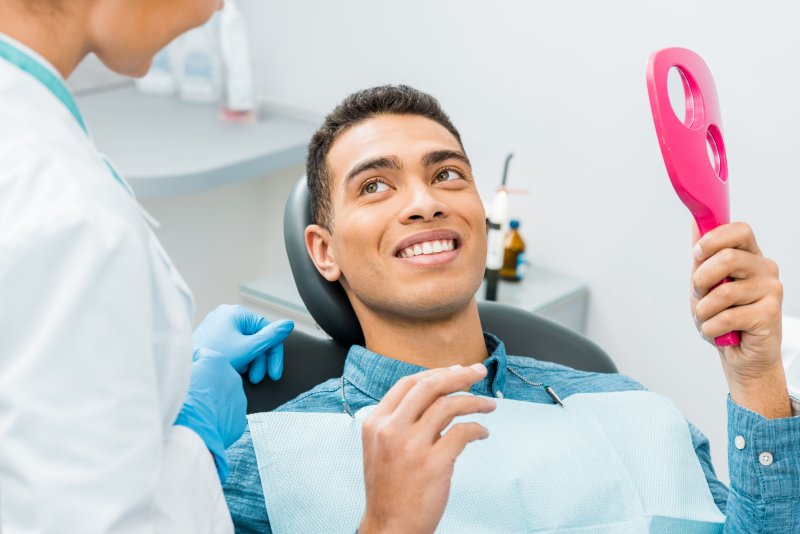The internet is an amazing resource that allows access to tons of information. However, like anything in life, it can be corrupted with falsehoods. The dental health world is not immune to this, as there are a host of myths circulating online that can definitely be misleading. It takes the right expert to clear the air, and that’s just what your dentist in Dublin is here to do. Read on as 5 common myths are laid to rest!
Myth #1 – Placing Aspirin on Gums Helps Soothe a Toothache
One of the most notorious oral conditions to deal with is a toothache. It’s no surprise, then, that several supposed remedies have emerged. One of them is the placement of aspirin on the gums to quiet the toothache’s symptoms.
The reality, though, is that aspirin is most effective when it directly enters the bloodstream. Thus, any benefits related to this practice are minimal at best. Furthermore, by placing aspirin directly on the gums, there is a chance of painful irritation.
The safer route to take is to apply ice to relieve any swelling, to contact your dentist to schedule a visit and to take ibuprofen to reduce the pain.
Myth #2 – Sugar is the Sole Cause of Cavity Development
While consuming an abundance of sugary foods and beverages can have an adverse effect on your oral health, the reality is that it’s not actually the sugar that causes the problems. It’s the body’s reaction to the leftover sugar particles that presents the threat to your oral health.
Inside your mouth are countless bacteria, and when sugar is consumed and left to fester, these bacteria flock to the area to feed. As the sugar is digested, acids are released that start the tooth and gum decay process.
Myth #3 – White Teeth Automatically Equal Healthy Teeth
Although white teeth are considered to be the “par excellence” for dental aesthetics, the reality is that having nice looking teeth doesn’t always translate into excellent oral health. That’s because such issues as cavities, infections and other developing problems quietly work beneath the surface, only announcing their presence when a noticeable issue arises.
To prevent this from happening, it’s important to practice excellent oral hygiene and to maintain regular visits to your dentist for preventive care.
Myth #4 – Brushing Your Gums Causes Them to Bleed
While vigorous toothbrushing can contribute to bleeding gums, it’s not always the sole reason for this. In many cases, it can be related to the development of gum disease, which is the infection and inflammation of the gum tissue.
The condition, which progresses over time, is caused by the accumulation of bacteria and plaque beneath the gum line, and one of its initial warning signs is bleeding gums. To find out for sure, though, what the source of the problem is, you should definitely contact your dentist to schedule a visit.
Myth #5 – Tooth Whitening is Dangerous
Because tooth whitening has become so popular, home whitening kits are now available at your local drugstore. There are still some concerns, though, about the safety of whitening teeth.
The reality, however, is that the most dangerous form of tooth whitening to participate in is the over-the-counter method. That’s because the trays supplied are generically designed. Thus, there is a chance of the whitening gel coming into contact with the soft tissue in the mouth, which can cause irritation.
With professional teeth whitening, patients have nothing to worry about. That’s because every step of the process is custom-designed to meet their needs, which for take-home kits, includes the usage of trays created just right to fit each patient’s mouth.
Now that these 5 myths have been dispelled, the next step is to take the necessary actions to upgrade your dental health and aesthetics. Contact your local dentist to schedule a visit today!
About the Author
For nearly two decades, Dr. Eric Buck has been providing the best in dental care. The Ohio State University College of Dentistry graduate still remains driven to make the experience of each patient who enters his practice phenomenal. For more information about the comprehensive care Dr. Buck provides, you can visit his website.

